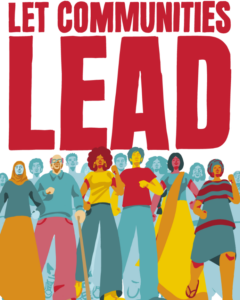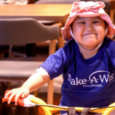As World AIDS Day (1 December) approaches, UNAIDS is urging governments to fully leverage the power of grassroots communities to help end AIDS as a public health threat. A new report launched today by UNAIDS, Let Communities Lead, shows that the proportion of HIV funding channeled through community-led organizations has declined by at least 35% over the last decade. To accelerate progress, the work of communities on the frontline must be better integrated into all aspects of the HIV response and properly resourced.
“Too often, communities are treated by decision-makers as problems to be managed, instead of being recognised and supported as leaders. Communities are not in the way, they light the way to the end of AIDS,” said Winnie Byanyima, Executive Director of UNAIDS.
Communities include organizations of people living with HIV, the key populations (men who have sex with men, people who use drugs, prisoners and other people in detention, sex workers and transgender people) and other civil society organizations. Since the inception of the AIDS pandemic, they have driven progress. This includes activism for global access to lifesaving antiretroviral therapy, legal and policy changes to create a more enabling environment for an effective HIV response and delivery of HIV prevention, testing, treatment and care services.
Through the 2021 Political Declaration on ending AIDS, United Nations member states committed to support community leadership. This includes having communities deliver 30% of testing and treatment services and 80% of HIV prevention services for people from populations at high risk of infection. However, the report reveals that while in 2012, around one-third (over 31%) of HIV funding globally was channeled through community-led organizations, by 2021, this declined to just 20%.
UNAIDS is calling for communities’ leadership roles to be made core in all HIV plans and programmes and for community-led organizations to be fully and reliably funded.
The Asia Pacific situation
In Asia and the Pacific, 96% of new HIV infections are among key populations and their sexual partners. Almost half (46%) of all new infections are among men who have sex with men while quarter (26%) of new cases are among young key populations between ages 15 and 24. Since 2010, there has been just a 14% reduction in new infections for the region as a whole, with rising epidemics in Afghanistan, Bangladesh, Fiji, Papua New Guinea, and the Philippines.
“Compared with other regions, Asia and the Pacific has the highest proportion of key populations among new HIV infections,” explained Eamonn Murphy, Regional Director of the UNAIDS Asia Pacific and Eastern Europe Central Asia regions. “It is imperative that a significant proportion of our HIV prevention, testing and treatment funding is channeled through the community-led organizations best placed to deliver concrete, population-specific interventions.”
Progress toward reaching the Global AIDS Strategy’s 95% testing and treatment targets is uneven. For the region as a whole, in 2022 78% of people living with HIV were aware of their status. Of these people, 84% were receiving treatment. Of those who were on treatment, 95% achieved HIV viral suppression.
“Communities help drive demand for services. They ensure that people not reached by formal health systems can get support. They monitor the quality of HIV services and help shape solutions,” explained Harry Prabowo, Program Manager of the Asia Pacific Network of People Living with HIV/AIDS (APN+). “Investments in community leadership are essential to the success of prevention, testing, linkage to care, retention, and adherence results. This is not just a nice thing to do—it ensures the programmes work and makes financial sense.”
The report features several examples of excellent community leadership from the region including these:
- The Seven Alliance, a consortium of regional people living with HIV and key population networks, is recognized for its strategic support to strengthen and expand community-led monitoring in Asia and the Pacific.
- In the Dien Bien province of Viet Nam social contracting (state financing for community service delivery) is used to fund community-led harm reduction, HIV testing and referral services.
- The testBKK campaign in Thailand converts social media engagement for young men who have sex with men and transgender people into HIV testing. This approach has been adapted in Cambodia, Indonesia, and the Philippines.
- Community-led organizations in China contributed to a four-fold increase in HIV testing, including by driving demand through online tools.
- In Myanmar community-led organizations are supporting treatment continuity in conflict affected areas.





